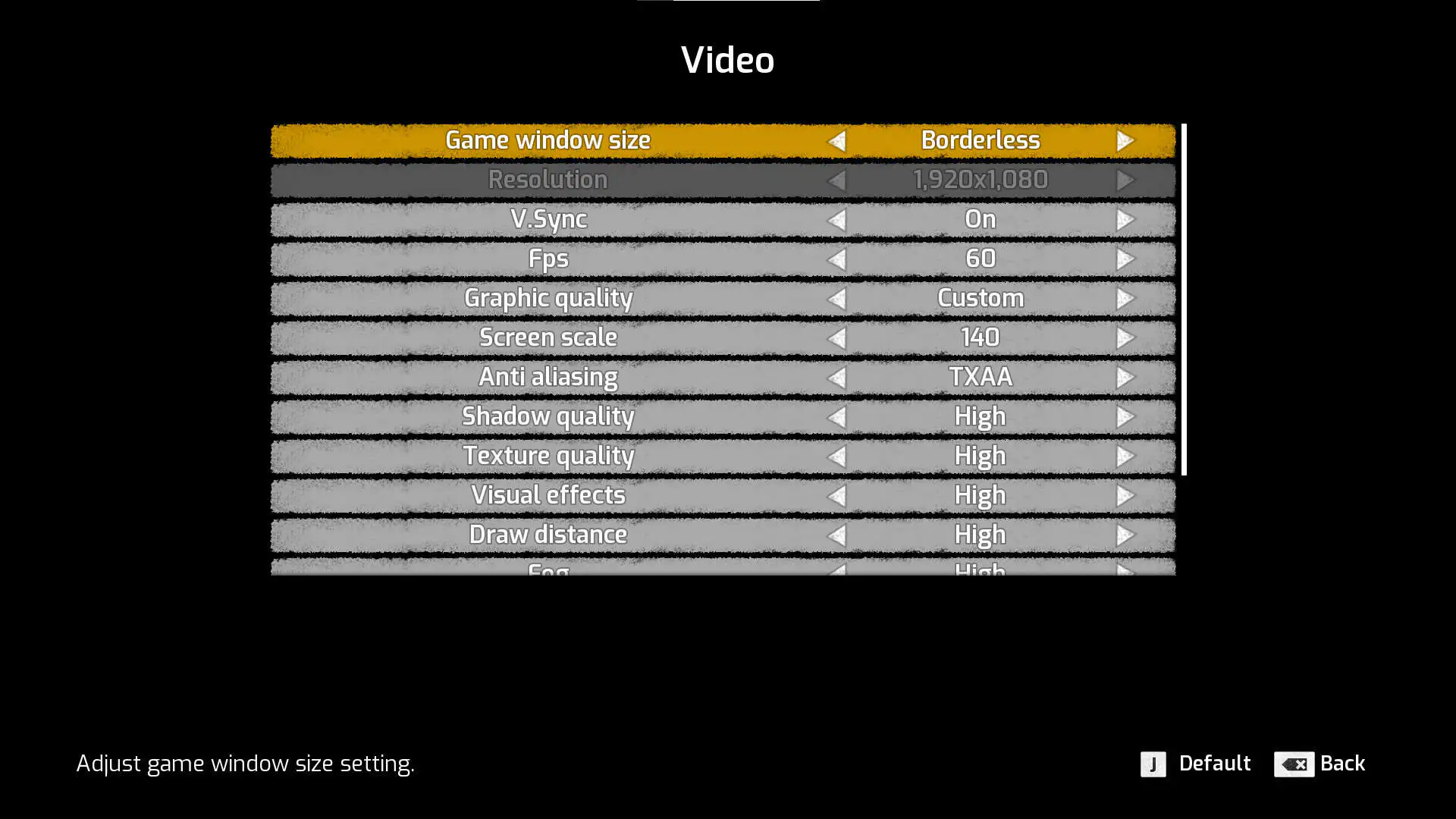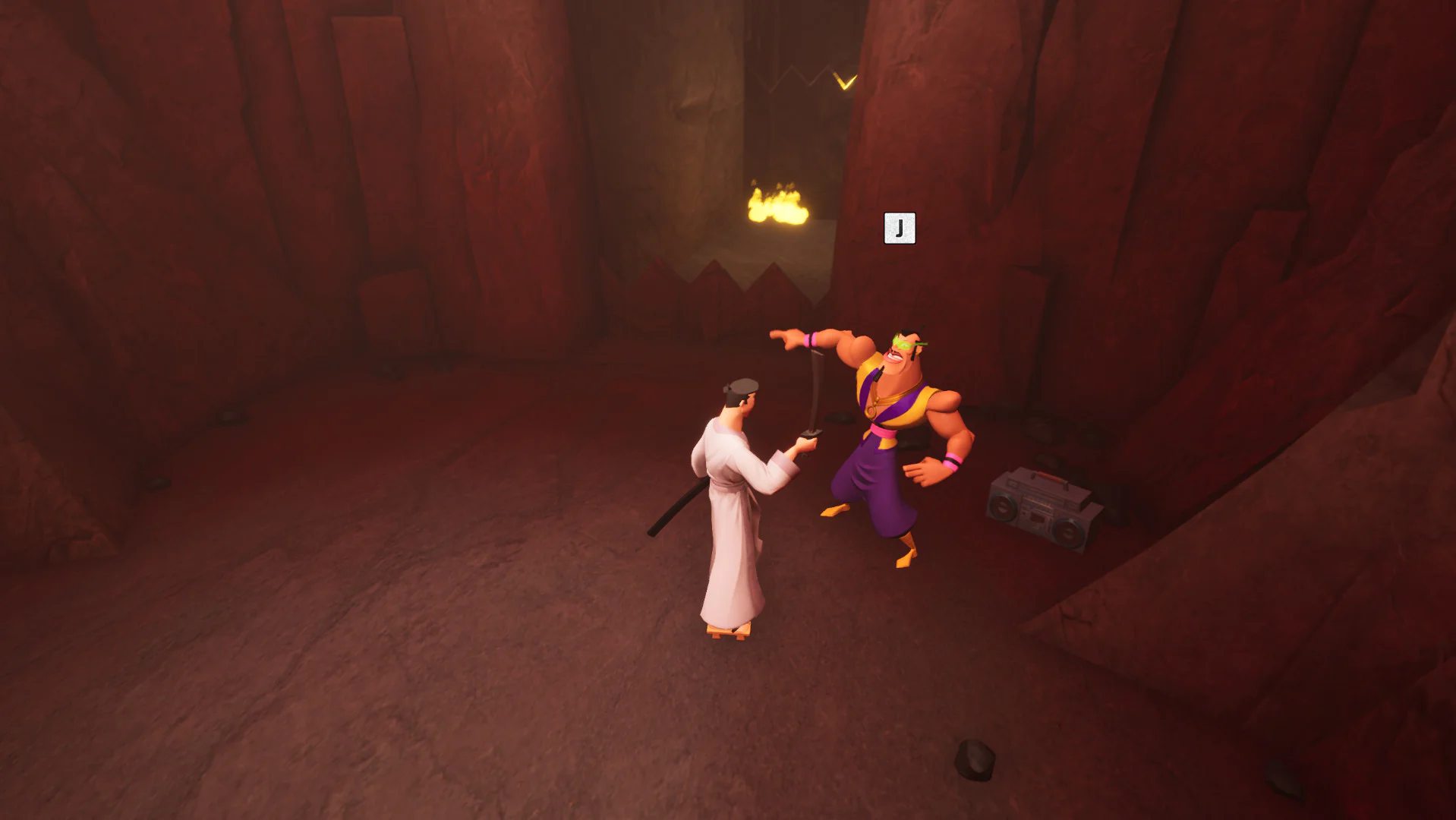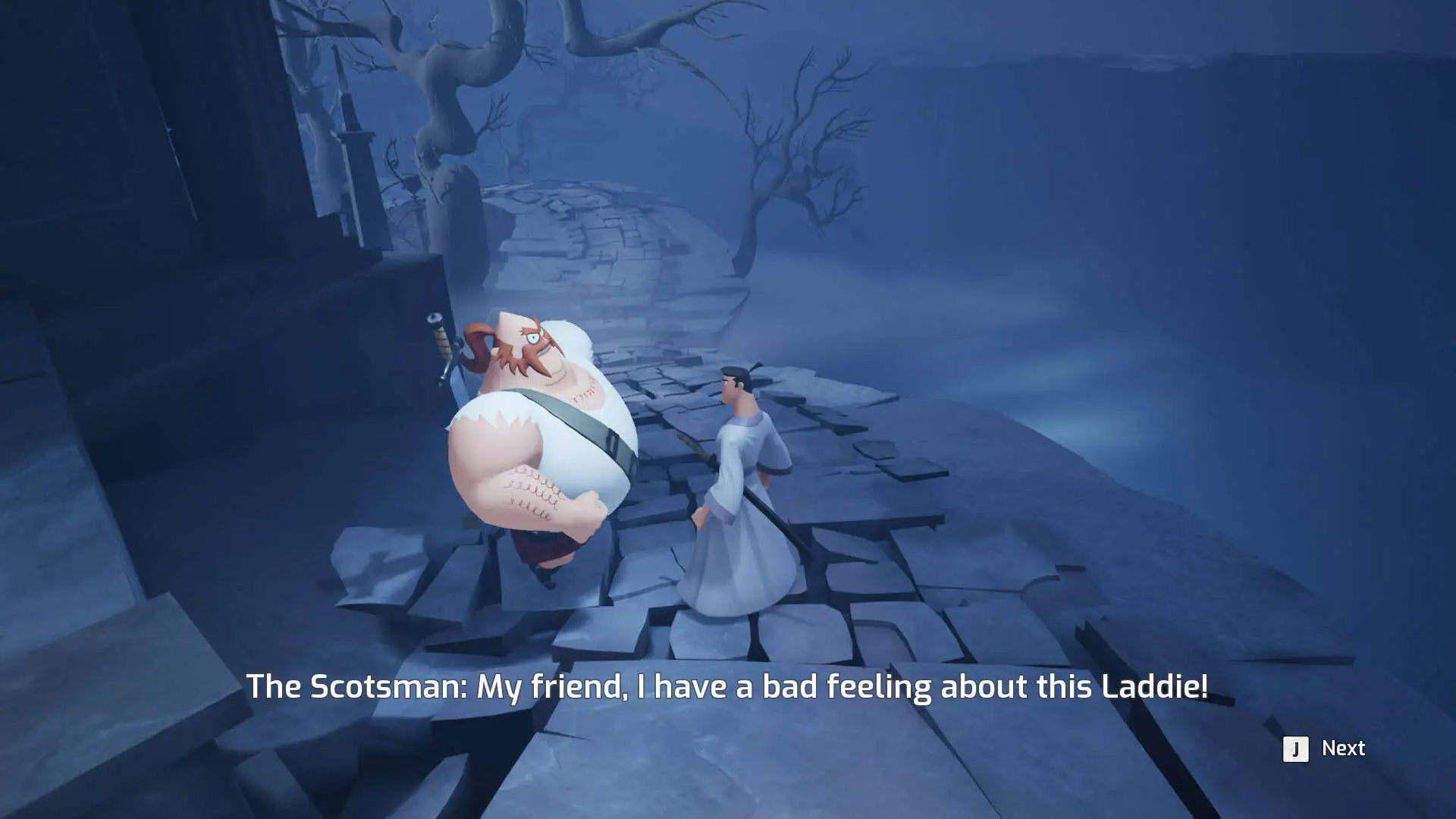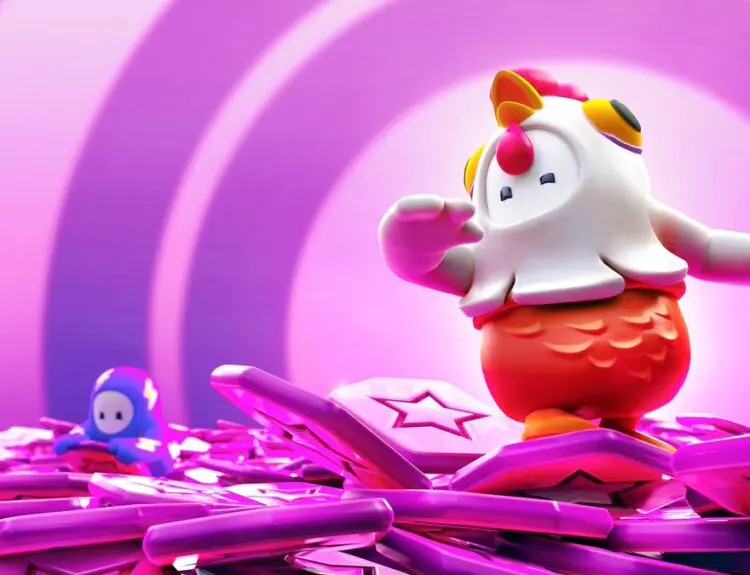Samurai Jack: Battle Through Time has finally released this morning, giving the masses the opportunity to finally get their hands on the title and explore it for themselves; this piece articulates precisely what we did, and did not, enjoy about Jack’s newest escapade. This review is from the title that released on Steam; thus we may go over aspects that are missing from consoles.
First and foremost, if you want the meat of it: if you’re looking for an opportunity to relive some brilliant moments with Samurai Jack, then you’ll enjoy Samurai Jack: Battle Through Time easily; it’s a no-brainer to pick it up and enjoy the appropriate (and well-handled) nods to the legacy of the series that began in 2001 throughout the plot. If you’re looking for something a bit deeper than the opportunity than to step into the geta (the wooden shoes that he clops around in) of Jack, then it all gets a bit muddled.
Settings & Optimization

Options with Samurai Jack: Battle Through Time – Samurai Jack via Soleil
Samurai Jack: Battle Through Time handles this surprising ease; loads of options to chew through to tweak and ensure that you can get the best version of the title running on your rig. With uncapped framerates (and an optional 60FPS lock) and a smattering of options that change draw distance and fog, it’s a strong nod towards the more finicky of PC players that expect a variety of options for accessibility.
Ultimately the game isn’t that performance intensive; the cel-shaded art style with relatively simple backgrounds doesn’t put too hard of a strain on your rig, although the option to greatly decrease fidelity allows the title to run on less performance-intensive rigs with ease.
There is no option at the moment to allow for DS4 controller prompts on the PC; if you opt to use the DualShock 4 for the playthrough, you currently will need to struggle with the incorrect prompts. Often it’s frankly non-vital, yet it can result in some minor annoyances when you’re learning a new ability or attempting to talk to a character.
The game comes in four flavors of difficulty, three of which are readily available from the start; Jack (Easy), Samurai (Normal), and Master Samurai (Hard). A locked ‘Master of Masters’ becomes available after a successful playthrough.

Samurai Jack via Soleil
As a pleasant surprise, Soleil doesn’t simply add to HP pools of enemies while turning your weapon into a moist noodle for the more punishing options; instead, enemies are added to the various encounter areas that will force players to fundamentally shift how they approach the encounter. On Samurai difficulty most will breeze through the title; on Master Samurai, be prepared to get juggled to death by scarabs with lasers as you futilely attempt to chase them. It’s doable but annoying, especially when you haven’t received any ranged attacks yet.
Working slowly through encounters and baiting enemies backward instead of forwards will work to your advantage, and making ready (constant) use of your block ability will see you through the more punishing difficulties.
Plot & Character Progression
There frankly isn’t much to see here if you’re familiar with Samurai Jack or Ronin (which is a great influence on the series); Jack gets sent through time by Aku.
He lands somewhere, players progress through a stage, and Jack runs into an old acquaintance here or there, big boss fight, and you progress to the next level. Necklaces with the symbol of Aku symbolizes the power that he holds over the various machinations; Jacky dices them up and is thrown to the next area.
This allows fans of the series to run across a wide array of characters that results in reuniting once Aku’s spell is broken. It’s a serviceable plot for the title to give players the ‘Why’ of progression, but that’s about it.
In terms of character progression, Jack levels up in two separate manners: the first is by running into Da Samurai, where Jack can purchase training to increase the damage he deals (along with healing kits). Da Samurai can be found slightly off the beaten path, although the secret paths are none too difficult to find; we found ourselves stumbling into them entirely by accident.

Former foe Da Samurai is found throughout levels, allowing players to train or repair their weapons; he also acts as a basic buying and selling point – Samurai Jack via Soleil
The second is through skill points which will unlock more skills for Jack to use throughout his journey; note that parrying is unlocked through the skill tree once you gain skill points, acquired by defeating foes and bashing random decor strewn about the levels. The good news is that it’s cheap; you can unlock the ability to parry after gaining 500 SP, which you’ll do with relative ease in the first level.
Jacky can use multiple weapons throughout his journey, although only his katana isn’t destructible; this frankly makes the katana the easy choice when progressing, as your preferred weapon won’t always be readily available throughout levels; more so if you opt not to repair weapons at Da Samurai. The games fusses a bit if you don’t use the other weapons, with a large text box appearing in the top-right if you just main the trusty katana, but you won’t struggle to maintain appropriate damage if you opt to main a singular option.
Levels
This is where the game begins to hit a few sour notes: progression, as stated in articles prior, consists of running through a level until you hit a wall with an encounter; clearing the enemies removes the wall, and you continue to run through the level until the next encounter. How many waves each encounter has for Jack to cut through varies, but the enemies seen are largely repetitive.
Occasionally, the title tries to interject a bit of variety with sidescrolling areas that primarily involve hopping around traps (that can hold some abominable hit boxes) and sprinting towards the side of the screen until you reach the next area. Occasionally, the title takes advantage of the new perspective to offer some gorgeous environments: often it does not.

The hitboxes on these flames, specifically, is a bit odd; after the flames disappear, you need to wait a fraction of a second longer lest Jacky takes damage from…the remaining heat – Samurai Jack via Soleil
You progress through the level until you run into the big bad guy, running into various NPCs that stand on the side of the path to offer a medley of canned dialogue that offers interestingly little to the player or the story.

‘I have a bad feeling’ is repeated often by NPCs, each with their own twist on it. They typically offer a small item as you run into them, but their existence can be entirely skipped without worry – Samurai Jack via Soleil
This alone isn’t an issue, as long as the combat fares well enough to keep players invested; if players are expected to stop multiple times to fight through enemy waves, the combat needs to be engaging and enthralling, or at the very least skill-based; Samurai Jack: Battle Through Time, unfortunately, does not offer this.
Combat
As progression ties directly into how efficiently you can cut through hordes of enemies, we would be remiss in our duty if we didn’t inspect combat.
Unfortunately, this is where Samurai Jack: Battle Through Time falls flat on its face. You can target enemies, but your combos are relatively disappointing with the same animations playing again and again while hordes of enemies politely wait their turn for you to smite them. There is very little tactical play involved within the title; run into enemies and smash the light-attack button until you’re allowed to move onwards.
Unlocking parrying brought about the hope that more timing and precision would be necessary; attempting to parry while you’re button-mashing (until an HP pool finally dissipates) typically results in Jack sliding forwards away from the enemies, opening your back to a multitude of hits. It’s like Jacky puts on ice-skates every time you try to parry in a direction, and it is maddening. If you want to unlock specific upgrades, you’ll need to unlock the ice-skating parry ability; there’s no way around it unless you opt-out of an entire skill tree.

Wait your turn, please! – Samurai Jack via Soleil
Attempting to play it slower (instead of button mashing) is a futile endeavor; enemies stand there most of the time; ranged enemies will attempt to maintain distance while peppering players with projectiles which becomes annoying as well; your singular dash ability is noticeably limited in distance. Expect to spend some time chasing enemies down until you get ranged abilities, which cuts down on the amount of tedium within combat thanks to their high damage (that can be further specialized in by the player).
Note that if you found the combat within Shadow of Mordor or Batman: Arkham Asylum to be riveting, Samurai Jack: Battle Through Time is right up your alley; lots of button mashing until you move on with your life. You can change which buttons you’re mashing, and in which order, but at the end of the day you’re spamming attacks ad nauseam until the game gets the hint and lets you progress to the next area.
For others that are a bit more demanding of their titles, the combat is a miss; we regularly found ourselves bored within combat segments with a limited move-set and disappointing interactions between Jack and his foes. Boss fights only brought up a modicum of excitement, yet they fall surprisingly quick and it’s back to waiting for the next encounter.
Summary
For die-hard fans of the Samurai Jack series, this is likely to be a hit simply due to how well-presented the style and characters are. If you’re looking past that character for a title to dig your teeth into, this is a bit of a difficult recommendation at its retail price of $40. We strongly recommend watching gameplay from various streams, and possibly pick it up on a future sale; $20 would make this far more palatable in our personal experience.







